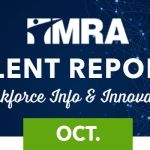As MRA prepares to host our DEI & Leadership Conference on October 17, 2024, I was struck by our timing when I realized that October is National Disability Employment Awareness Month (NDEAM). The Department of Labor’s website describes NDEAM as an annual celebration of the contributions of the country’s disabled workers that showcases supportive, inclusive policies and practices that benefit employees and employers alike. This year marks the 79th anniversary of NDEAM with a theme of “Access to Good Jobs for All.”
According to the Employer Assistance and Resource Network on Disability Inclusion (EARN), in 2022 roughly 22 million (11 percent) of non-institutionalized working-age (18 through 64 years old) people in the U.S. have a disability. Of these, 44.8 percent are employed, compared to 79.1 percent of people without a disability. Of these, those with hearing and visual impairments experienced the highest employment rates at 57.8 percent and 51.1 percent, respectively. Over ten million people were reported to have cognitive disabilities—the highest reported, but the employment rate lagged at 39.2 percent.
Why is this important to employers? Benefits associated with integrating disabled employees into your workforce include improved morale and overall increased employee engagement, access to skilled and dependable workers, and increased innovation and creativity, not to mention the potential for tax credits. In their July-August 2023 article “Disability as a Source of Competitive Advantage” the Harvard Business Review cites positive impacts on organizational culture, market appeal, and access to capital and talent as some of the benefits of disability inclusion.
Excellent resources are available to employers who wish to start their disability inclusion efforts. Work Without Limits’ website contains information for employers encompassing how to get the process started, the business case for disability inclusion, accessibility resources, and links for diverse types of disabilities. EARN is another resource that provides information, toolkits, and other tools. Employers looking for information on what types of accommodation an employer must consider can look for accommodation recommendations and ideas based on the type of disability at the Job Accommodation Network’s website askjan.org. Curious about the opportunities for tax credits? The IRS provides guidance on the various credits available to employers.
The Department of Labor nicely summarized the benefits that employing individuals with disabilities bring to the workplace:
“Perhaps more than any other group of people, individuals with disabilities have the ability to adapt to different situations and circumstances. As employees, they add to the range of viewpoints businesses need to succeed, offering fresh ideas on how to solve problems, accomplish tasks and implement strategies.”
With empathy and education, we can move the needle upward from 11% for our disabled population and reap the benefits both socially and economically.






